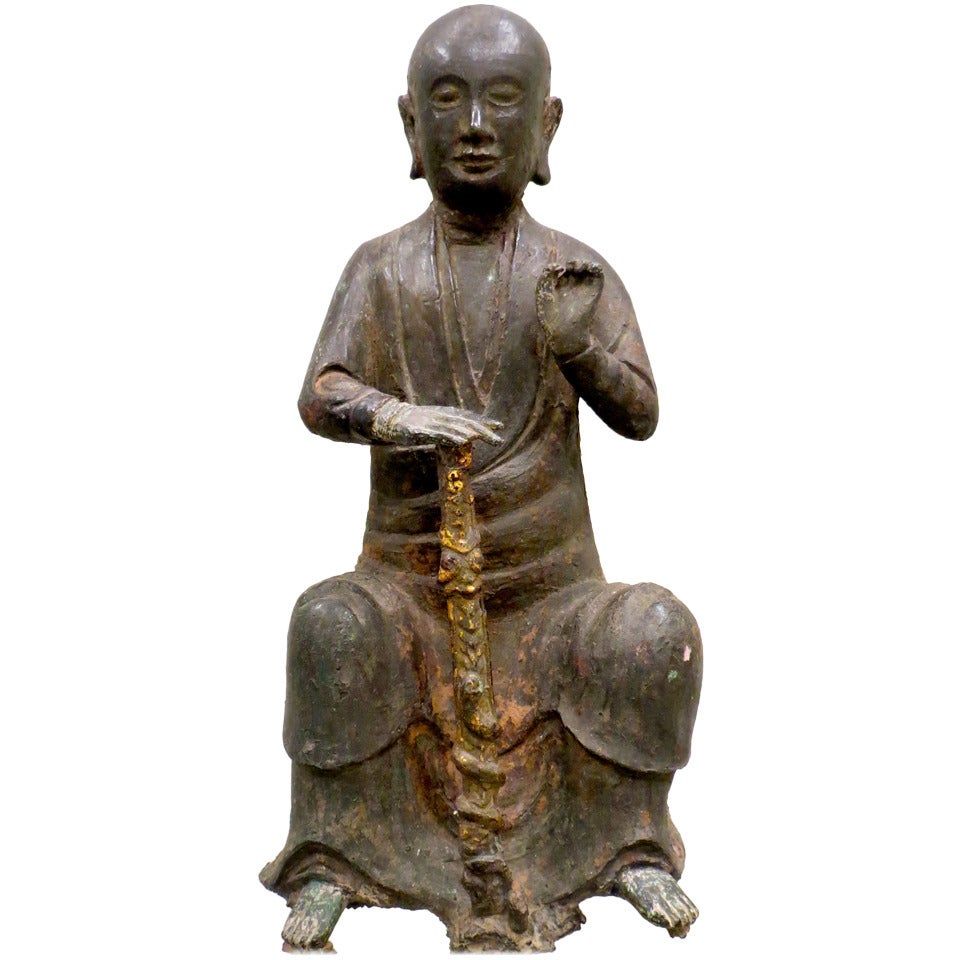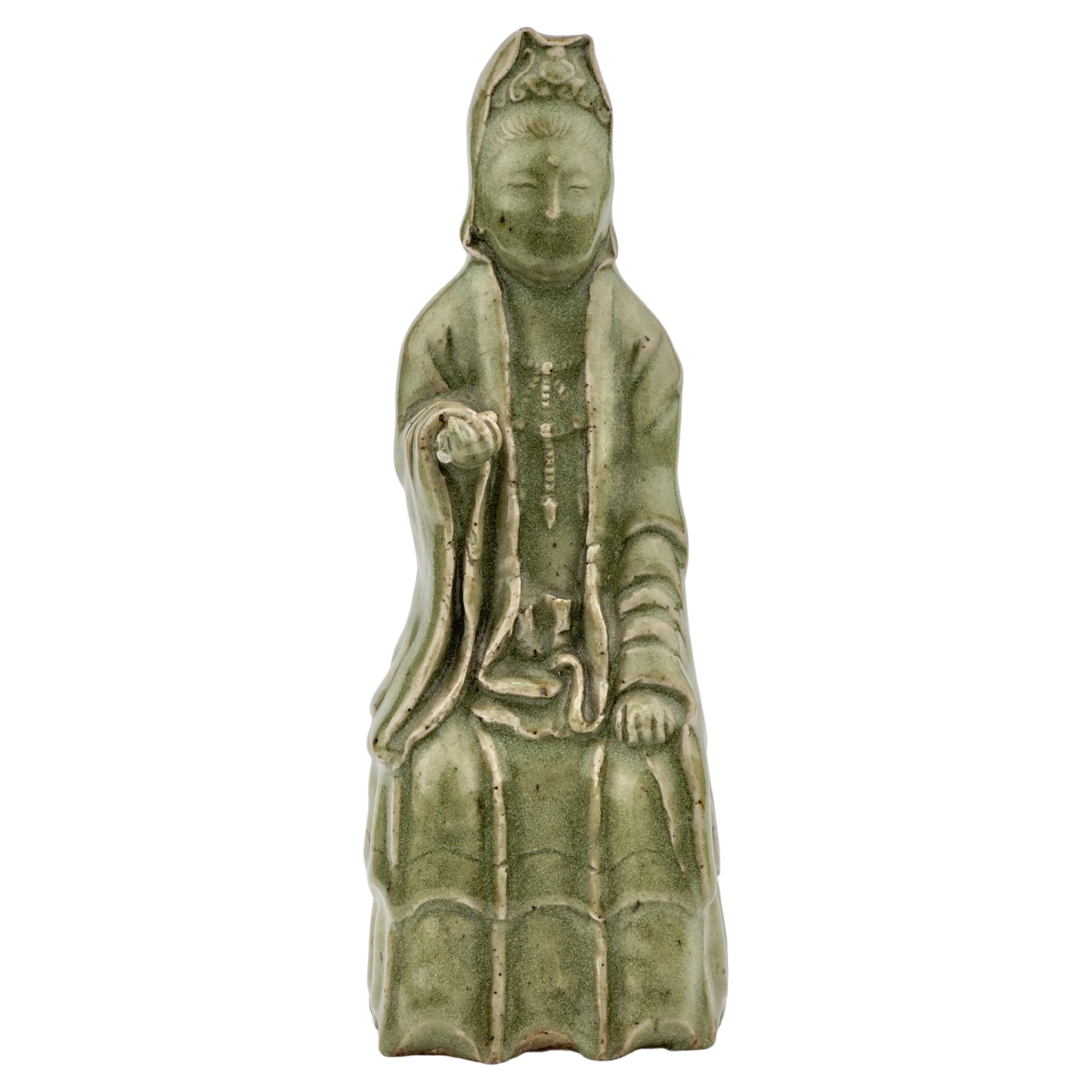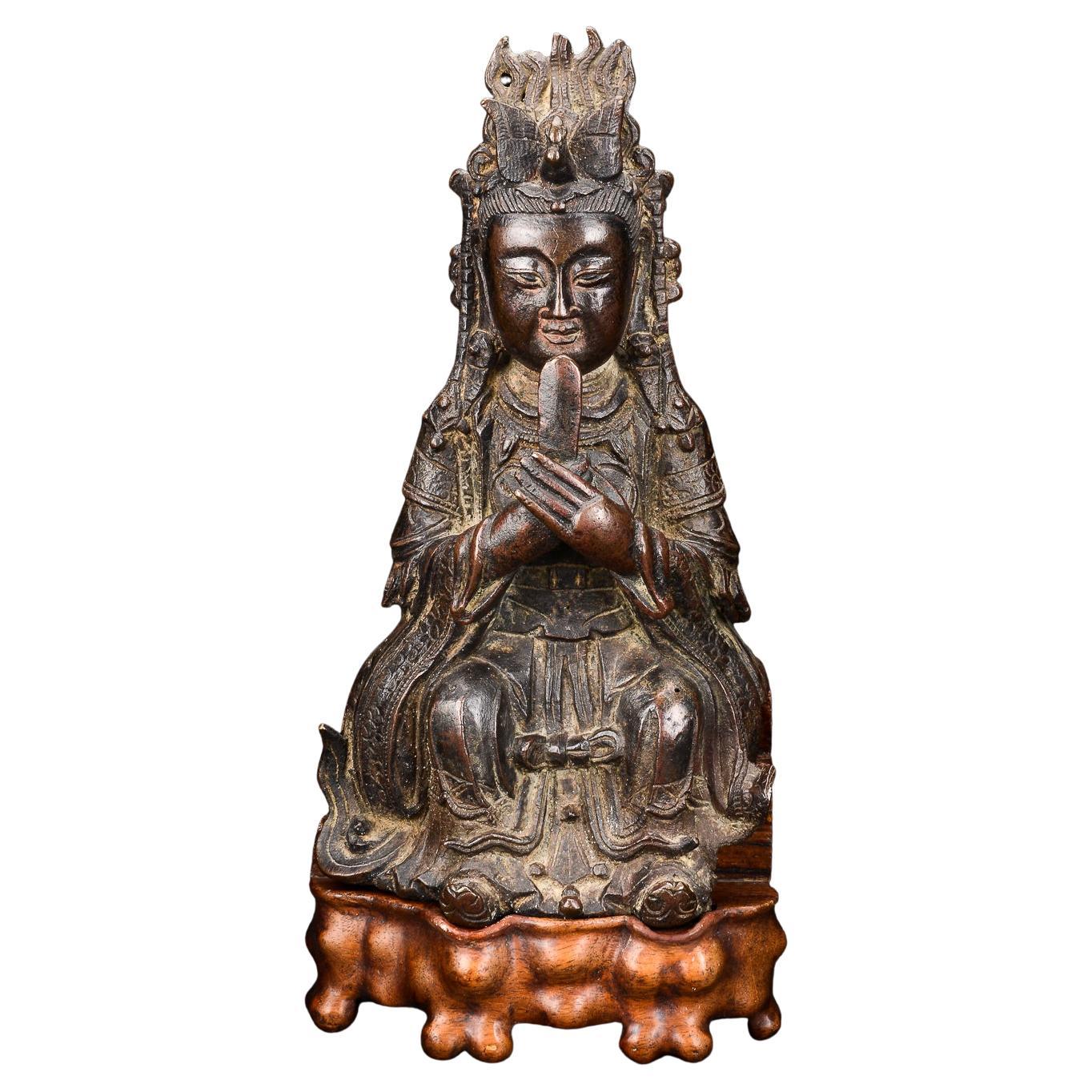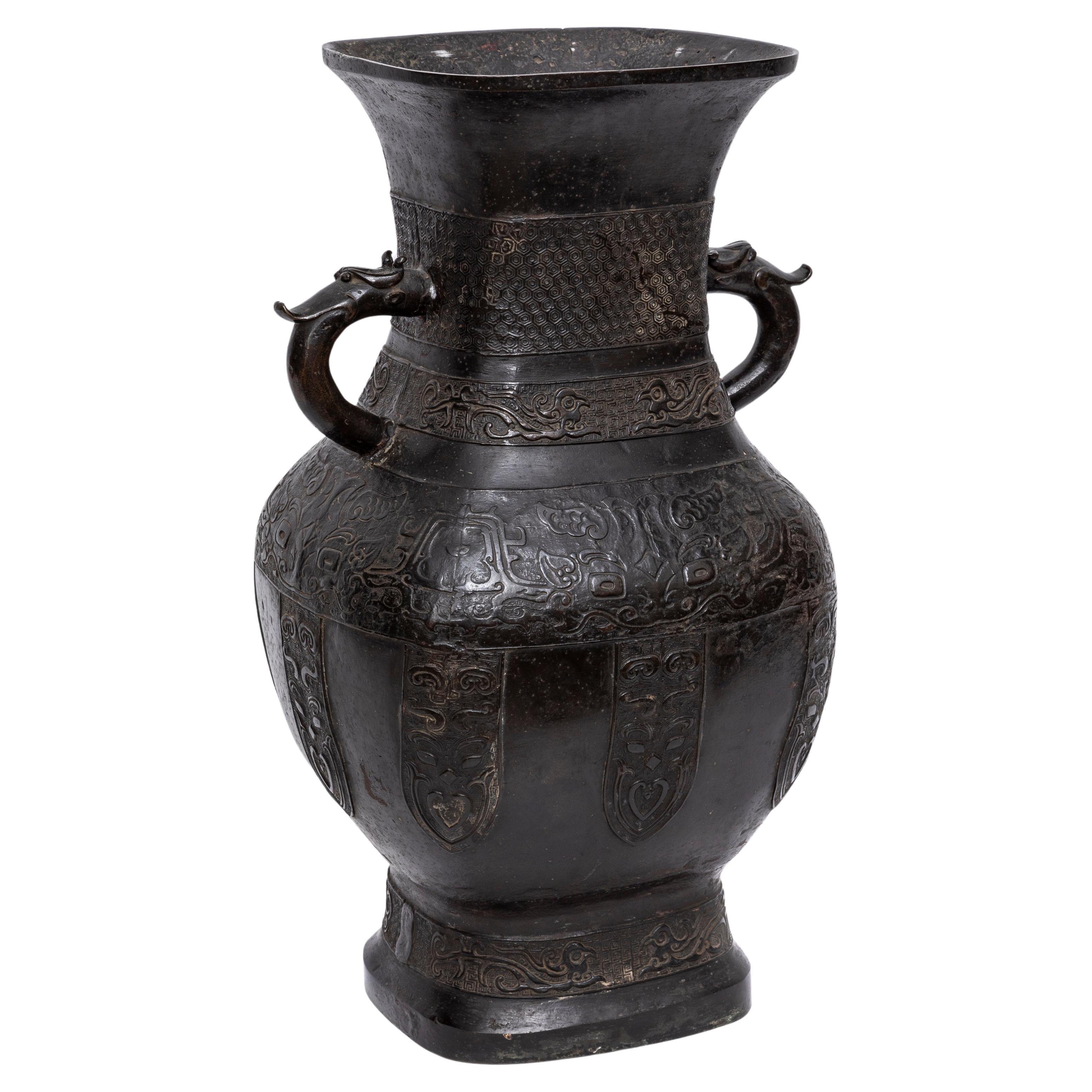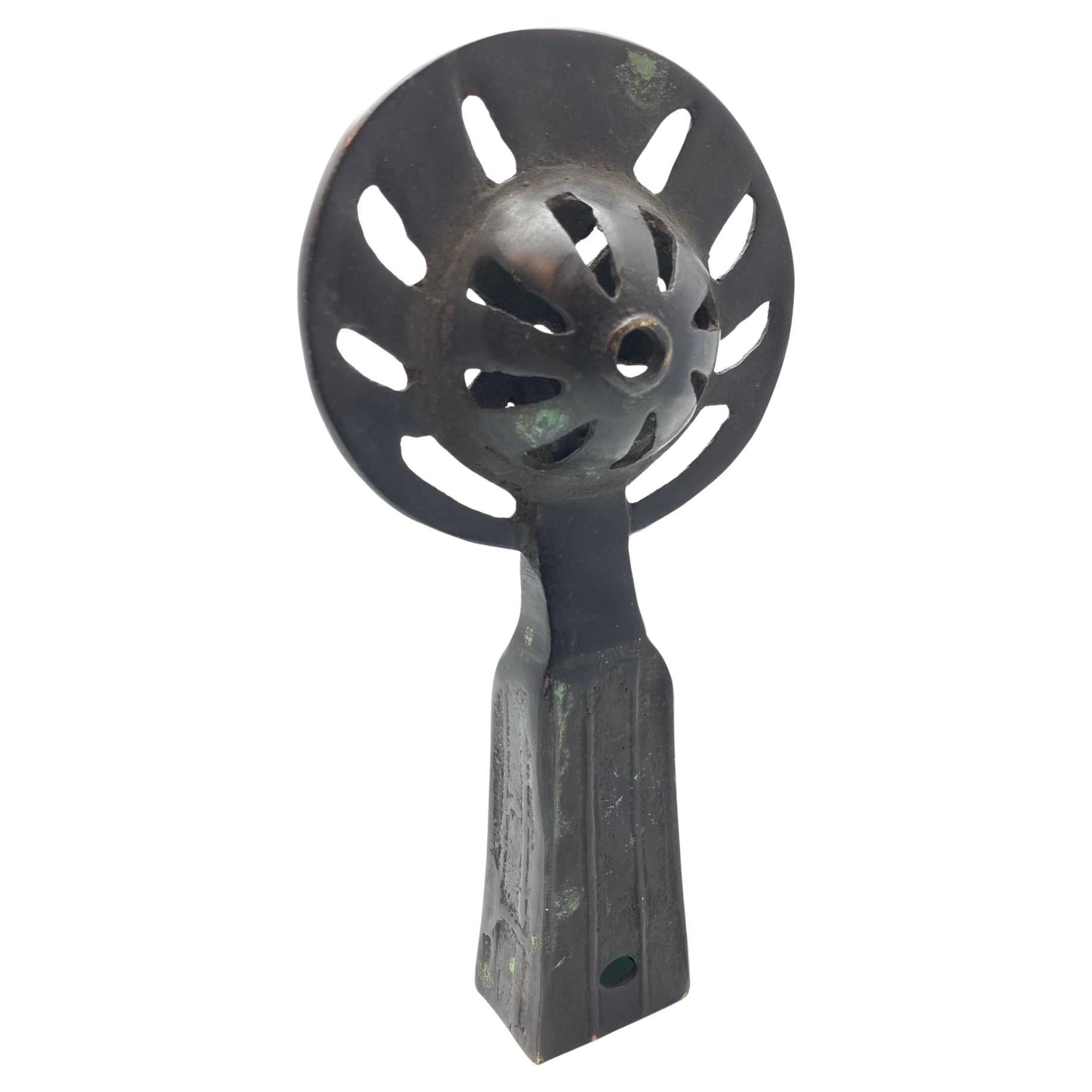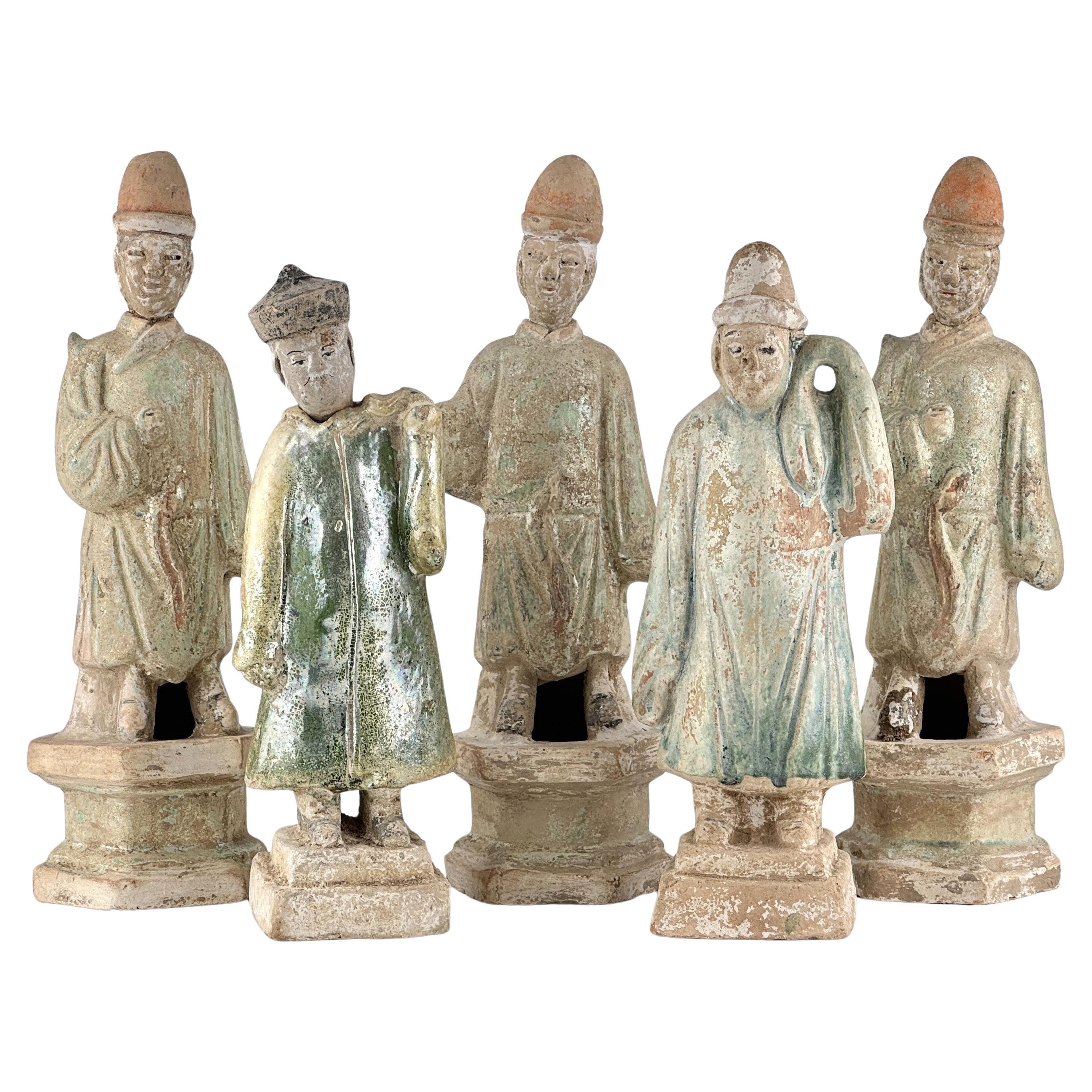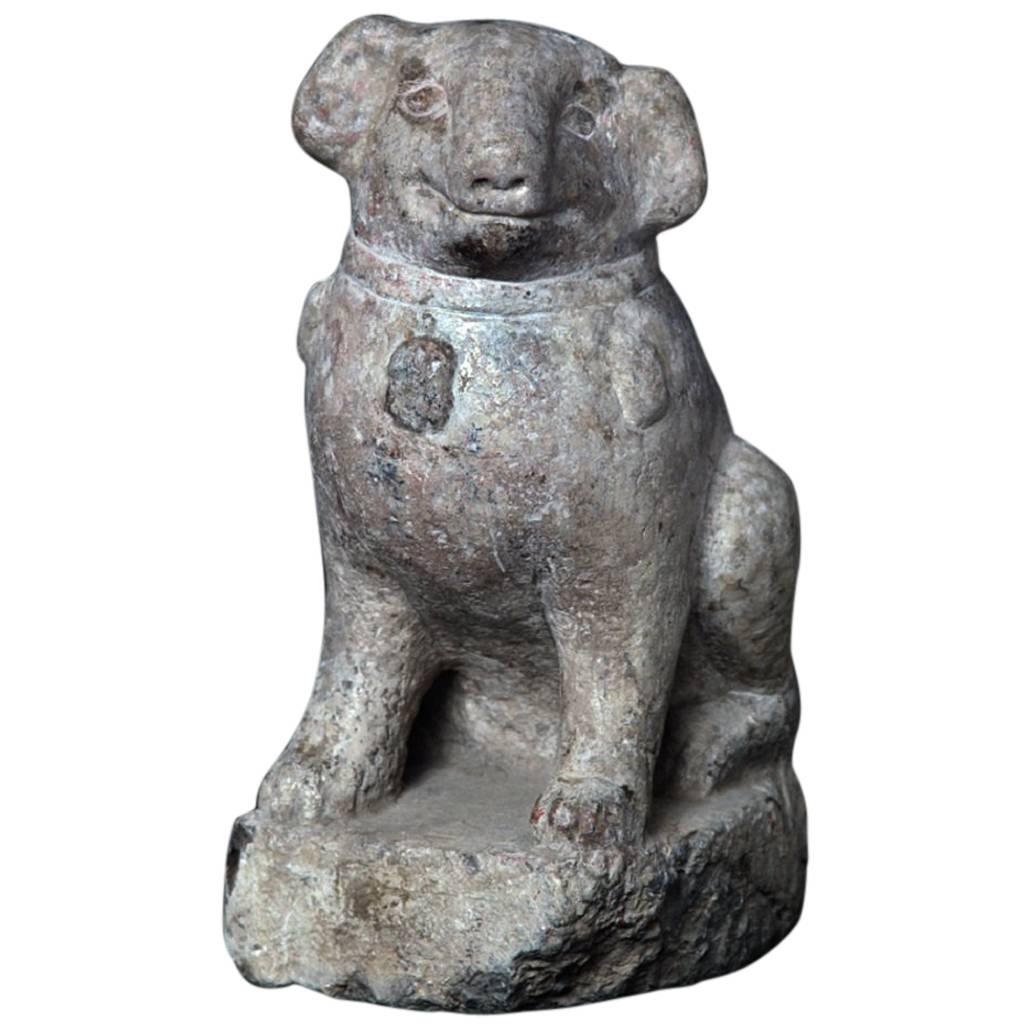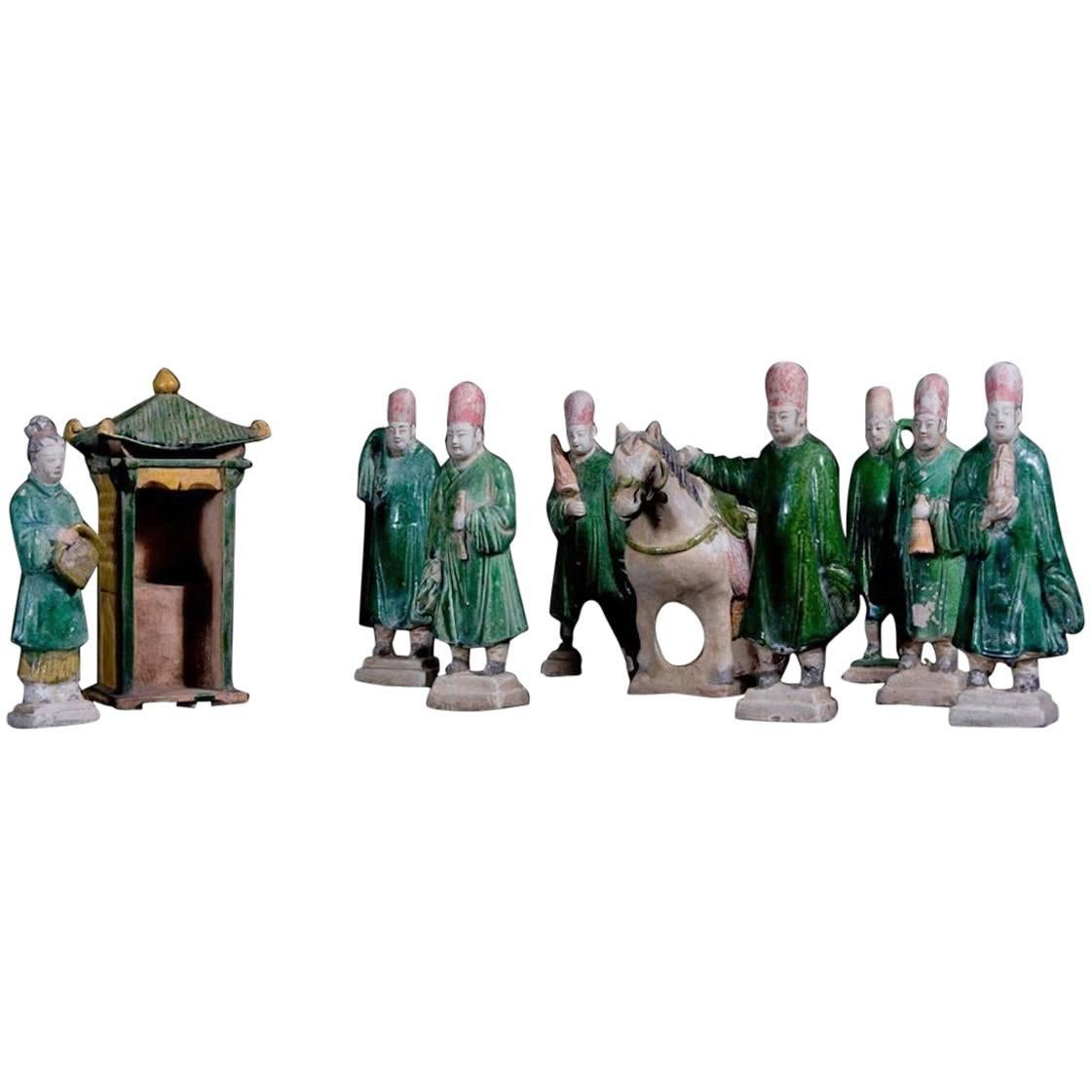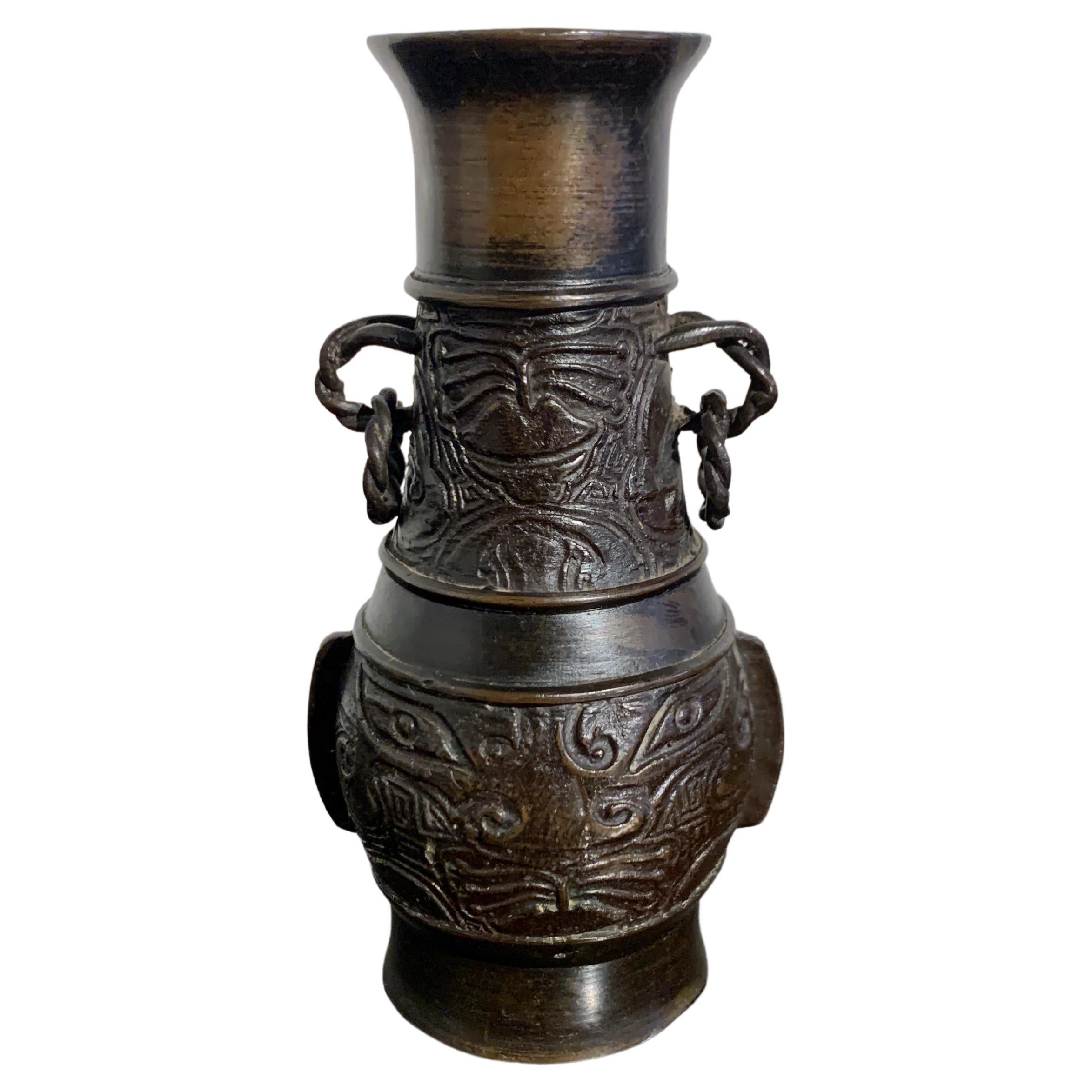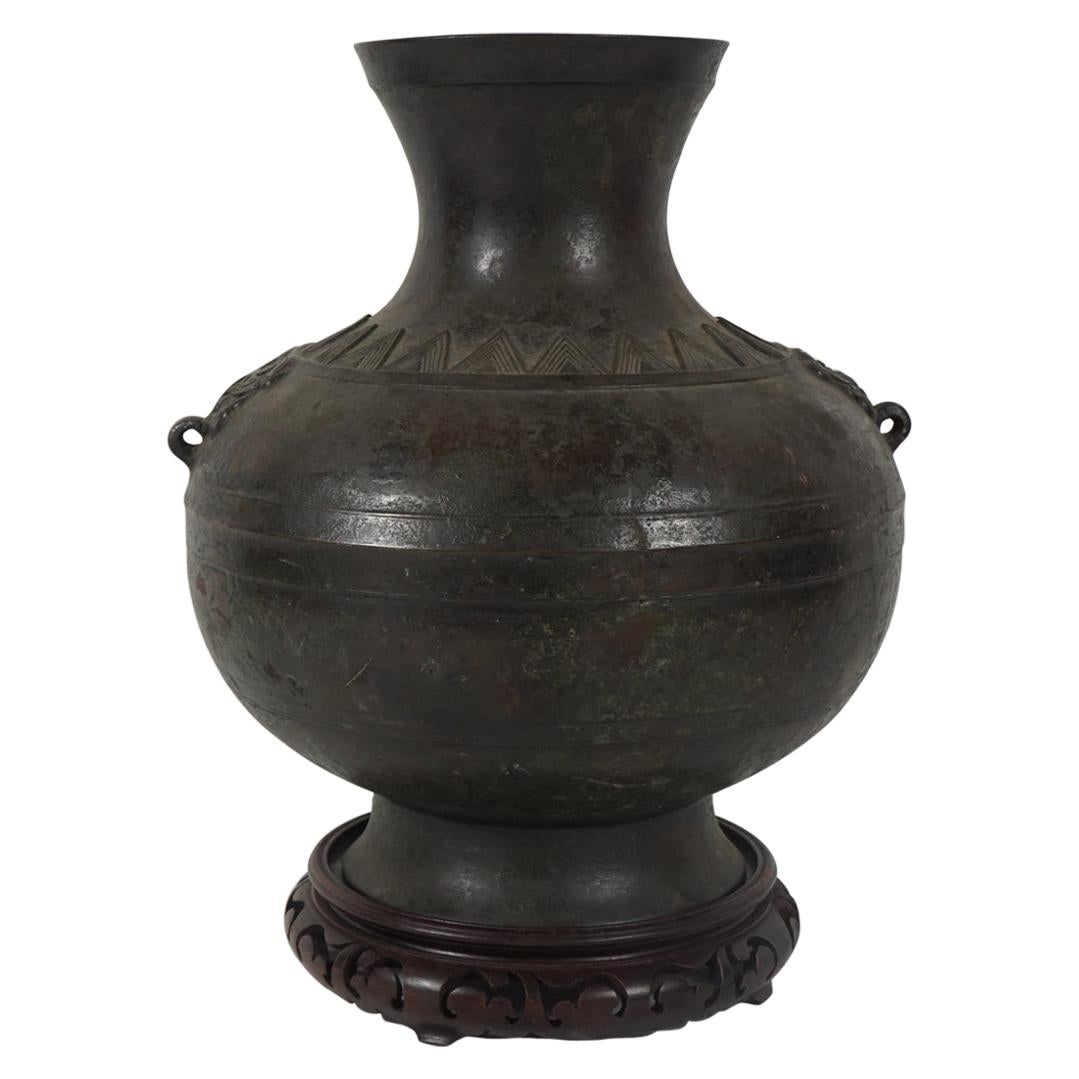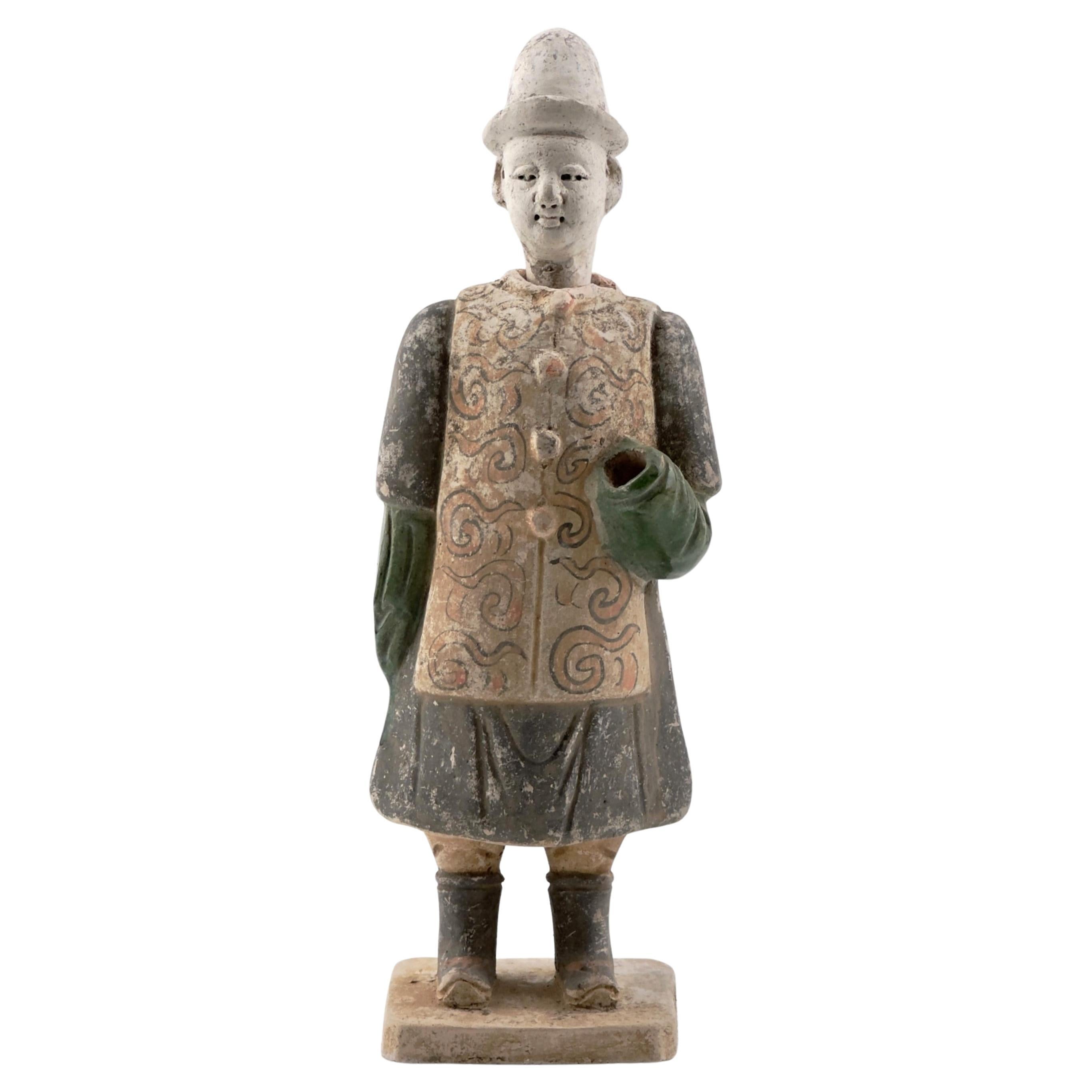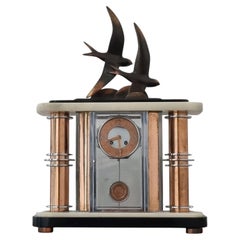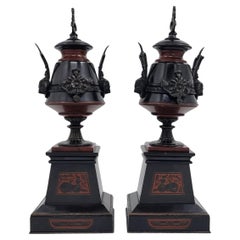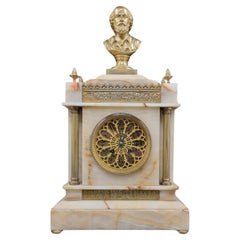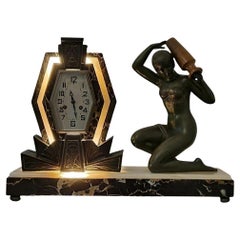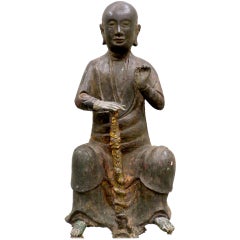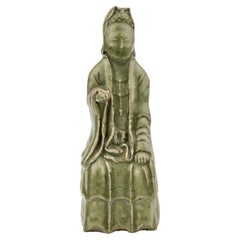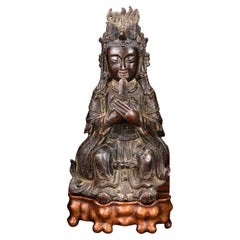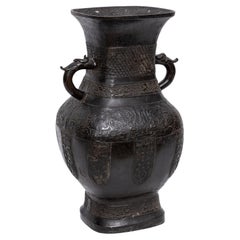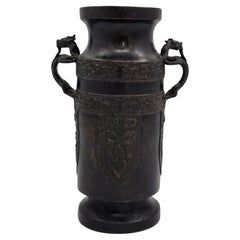
Ming Dynasty Bronze Vase ( 1368- 1644 )
View Similar Items
Want more images or videos?
Request additional images or videos from the seller
1 of 10
Ming Dynasty Bronze Vase ( 1368- 1644 )
$1,487.70List Price
About the Item
- Dimensions:Height: 11.03 in (28 cm)Width: 7.49 in (19 cm)Depth: 7.49 in (19 cm)
- Materials and Techniques:Bronze,Cast
- Place of Origin:
- Period:
- Date of Manufacture:( 1368- 1644 )
- Condition:Wear consistent with age and use. Minor structural damages. Minor damage to the base, but all consistent with age and use.
- Seller Location:Hoddesdon, GB
- Reference Number:1stDibs: LU9494237349362
About the Seller
5.0
Gold Seller
Premium sellers maintaining a 4.3+ rating and 24-hour response times
Established in 1987
1stDibs seller since 2023
15 sales on 1stDibs
Authenticity Guarantee
In the unlikely event there’s an issue with an item’s authenticity, contact us within 1 year for a full refund. DetailsMoney-Back Guarantee
If your item is not as described, is damaged in transit, or does not arrive, contact us within 7 days for a full refund. Details24-Hour Cancellation
You have a 24-hour grace period in which to reconsider your purchase, with no questions asked.Vetted Professional Sellers
Our world-class sellers must adhere to strict standards for service and quality, maintaining the integrity of our listings.Price-Match Guarantee
If you find that a seller listed the same item for a lower price elsewhere, we’ll match it.Trusted Global Delivery
Our best-in-class carrier network provides specialized shipping options worldwide, including custom delivery.More From This Seller
View AllArt Deco Glass Panelled Clock with Bronze Swallows
Located in Hoddesdon, GB
A striking Art Deco Cubist design clock featuring a mirrored face framed by chrome and copper-plated elements, crowned with intricate bronze shallows. This piece embodies the sleek, ...
Category
Vintage 1930s French Art Deco Mantel Clocks
Materials
Onyx, Marble, Bronze
19th Century Egyptian Revival Marble and Bronze Cassolettes / Urns
Located in Hoddesdon, GB
Pair of exquisite 19th-century Egyptian Revival urns/cassolettes/clock garnitures. Beautifully decorated with cast bronze Egyptian Revival motifs, including pharaoh masks on both sides and red engravings...
Category
Antique 1860s French Egyptian Revival Urns
Materials
Marble, Bronze
19th Century Onyx and Bronze Clock with William Shakespeare
Located in Hoddesdon, GB
A William Shakespeare Gothic revival mantle clock, dating back to the mid-19th century, superb quality and is made from onyx and gilt bronze. The clock showcases reeded column suppor...
Category
Antique Mid-19th Century French Gothic Revival Mantel Clocks
Materials
Onyx, Bronze
Art Deco Clock with Lamp - Water Carrier Sculpture / Illuminated Nude with Vase
Located in Hoddesdon, GB
A spectacular Art Deco illuminated clock featuring a sculpture of the water carrier / Nude with Vase.
The exquisite geometric design of the clock c...
Category
Antique 1830s French Art Deco Mantel Clocks
Materials
Alabaster, Marble, Spelter
Art Deco Bronze Clock Garniture Set "Patience" by Suzanne Bizard Circa 1925
By Susanne Bizard
Located in Hoddesdon, GB
Introducing "Patience," a captivating Early Art Deco figural clock garniture set, made by the a renowned sculptor of the Art Deco era, Suzanne Bizard.
Exquisite clock features a be...
Category
Vintage 1920s French Art Deco Mantel Clocks
Materials
Marble, Bronze
Art Deco Egyptian Revival Clock Set with Pair of Obelisks
Located in Hoddesdon, GB
A stylish Art Deco Egyptian Revival clock set featuring a central timepiece flanked by a pair of obelisks, this piece exudes the grandeur and mystique of the early 20th-century fasci...
Category
Early 20th Century French Art Deco Mantel Clocks
Materials
Marble, Bronze
You May Also Like
Bronze Figure of a Seated Luohan, Ming Dynasty, 1368-1644
Located in Torino, IT
Cast seated wearing a simple robe with his right hand resting on the hilt of a snake-entwined sword, the left hand held aloft, his face with meditative expre...
Category
Antique Early 1600s Chinese Ming Sculptures
Materials
Bronze
Longquan Celadon Figurine, Ming Dynasty (1368-1644)
Located in seoul, KR
This sculpture is a Longquan celadon from the Ming Dynasty, renowned for its rich and jade-like green glaze. The figurine is likely a representation of a Buddhist deity or a revered scholar, showcasing the calm aesthetic expressions and graceful contours prevalent during the era. The spectrum of celadon glaze ranges from a dense grey stoneware to a nearly white porcelain texture, with unglazed parts revealing a terracotta brown upon firing. Such pieces were often part of household altars, reflecting the era's spiritual devotion. This artifact would be a treasured exhibit in any museum's Asian art collection, symbolizing both religious reverence and artistic excellence.
Period: Ming Dynasty (1368-1644)
Region: Longquan, China
Medium: Stoneware - Celadon glazed, with a range from heavy grey to almost white porcelain-like material
Type: Sculpture
Height : 24.5 cm
Provenance : Acquired in 1999, Hongkong
* Ming Dynasty Longquan Celadon
Longquan celadon from the Ming Dynasty typically exhibits a more robust and heavier stoneware body compared to its Song Dynasty predecessors. The Ming era saw an evolution in celadon glaze, achieving a wider spectrum of green hues, from olive to bluish-greens. Ming celadons...
Category
Antique 15th Century and Earlier Hong Kong Ming Antiquities
Materials
Celadon
$3,835 Sale Price
35% Off
Bixia Yuanjun Figure of Bronze Dated Ming Dynasty, 1368-1644
Located in London, GB
Bixia Yuanjun figure of bronze dated Ming Dynasty 1368-1644.
Base of hardwood.
Height excluding base 26cm;
Heigh including base 31cm.
Condition:
Corrosion on reverse/back;
...
Category
Antique 15th Century and Earlier Chinese Ming Antiquities
Materials
Bronze
A Ming Dynasty Patinated Bronze Relief Work Vase Turned to a Lamp
Located in New York, NY
Hailing from the Ming period in 16/17th century, this monumental bronze vase is a fine example of the auspicious decor and markings unique to Chinese furnishings. The vase is cast wi...
Category
Antique 17th Century Chinese Ming Metalwork
Materials
Bronze
Chinese Ming Dynasty Bronze Luan Chariot Bell
Located in Point Richmond, CA
Cast with a globular top with a central aperture on both sides, pierced with radiating petals to one side, supported on a tall spreading foot of rectangular section cast with raised ...
Category
Antique 15th Century and Earlier Chinese Medieval Metalwork
Materials
Bronze
Five Green Glazed Pottery Attendant Figures, Ming Dynasty(1368-1644)
Located in seoul, KR
The three figurines in the back exhibit the typical form of attendants, wearing conical red hats and adopting poses where their right hands are either held in front of their chests o...
Category
Antique 15th Century and Earlier Hong Kong Ming Antiquities
Materials
Pottery
$2,925 Sale Price / set
35% Off
Recently Viewed
View AllMore Ways To Browse
Ming Bronze Vases
Chinese Archaistic Bronze Vase
Bronze 19 Century Chinese Vases
Repousse Dragon
Meiji Mixed Metal
Jade Cloisonne
Japanese Meiji Period Mixed Metal
Persian Hammered Brass
Koro Incense
Cloisonne Incense
Islamic Hammered Tray
Bronze Lion Japan
Antique Tibetan Silver
Cloisonne Egg
Meiji Silver Dragon
Tibet Copper
Meiji Eagle
Tsuba Japan
